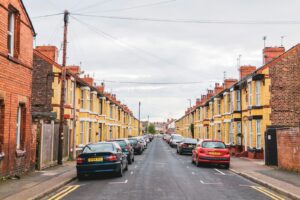Gentrification? It ain’t natural
 ‘Gentrification is a natural evolution’.
‘Gentrification is a natural evolution’.
These five (deliberately?) provocative words triggered a minor storm on the #cities and #urbanism edges of the Twitter tea-cup recently. They served as the headline to a Guardian Comment is Free article analysing a new research paper by a group of UK and Italian academics.
Worse was the standfirst to the piece:
‘By regarding cities as natural organisms, we can see what drives gentrification – and perhaps predict the next Brixton or Battersea’.
And this was only a hint toward the rather crude simplification of the academics’ research that ran throughout.
‘The Form of Gentrification: Common morphological patterns in five gentrified areas of London, UK’ is a novel attempt to understand why some places in London have become gentrified. As the title suggests, Alessandro Venerandi and his colleagues argue that the physical make-up of certain neighbourhoods, predominantly the street pattern and connections to other parts of the city, make them more likely candidates.
From this perspective they argue that gentrification is a ‘natural and cyclical force underpinning the evolution of cities’. Crucially, however, they couch this argument in reference to Jane Jacobs’ philosophy that cities and the neighbourhoods within them follow an unpredictable and un-plannable path.
If we see gentrification in this light, they argue, we should neither encourage nor try to stop it. Gentrification is but one current in the messy whirlpool of urban development, ‘just the way cities work on the ground, and indeed an opportunity for policies of social equity to take place and operate’.
Nowhere in the paper do they state that gentrification is ‘almost a law of nature’, to quote the Comment is Free piece. Nor they do use the phrase ‘natural evolution’.
That idea that gentrification is a ‘natural evolution’ of neighbourhoods is a gross misappropriation of Jacobs’ humanist philosophy. The notion has three major and accumulative flaws:
First, it assumes that gentrification is inevitable. After all, who can argue with the ‘almost laws of nature’?
From there, one must assume it is a positive. Who can argue with evolution?
Finally, as the standfirst suggests, if we can understand these laws we can predict their consequences, and spot the ‘next Brixton or Battersea’.
The academics were arguing that gentrification is one of the processes through which the neighbourhoods in a city go up and down in value and appeal, shrink and expand, flourish and diminish, all in relation to each other. Anne Power and I made a similar point in our book Jigsaw Cities.
The Comment is Free piece tacked onto this the teleogical notion that neighbourhoods follow a naturally-deigned path toward the evolutionary objective of gentrification.
Gentrification is a controversial and contested topic, which the Guardian has tackled brilliantly. Check out this in-depth piece by Sophie Robinson-Tillett and Aditya Chakrabortty.
I appreciate newspaper pieces have to simplify, and that academic reports are not the easiest to interpret, but on this occasion another of C. P. Scott’s dictums comes to mind: ‘It is well to be frank; it is even better to be fair’.















